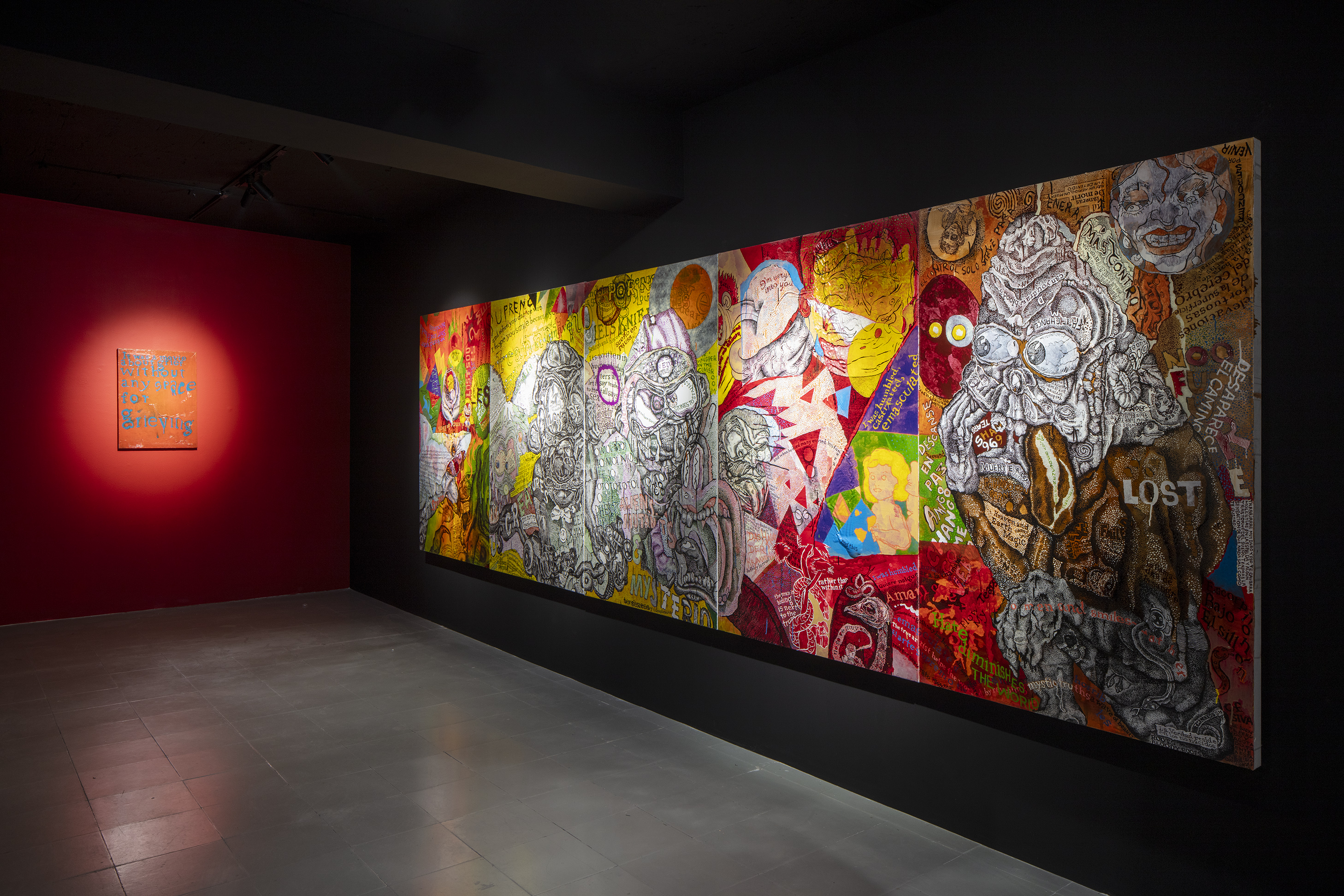
“Sánchez Rull revela cómo su trabajo, influenciado tanto por la historia del arte como por su pasión por los monstruos y la caricatura, desafía las ideas convencionales sobre belleza, pureza y el papel del artista en la sociedad.
En entrevista, ofrece un recorrido por su pensamiento, técnica y los proyectos que aún le quedan por explorar en su singular universo creativo.
Dice que su exposición, en la Galería Pequod, en Lancaster 29, colonia Juárez, reúne dos polípticos recientes, Jugular Veins y El duro deseo de durar, acompañados por la serie de grabados Suite San Loco y una selección de pinturas que forman un recorrido por su trayectoria.
¿Cómo influye la historia del arte en tu trabajo y qué aportes quieres hacer?
La historia del arte para mí no es una línea progresiva sino una especie de entramado donde lo culto y lo popular se mezclan. En mi práctica conviven referencias a El Greco, series animadas de televisión infantil y elementos de caricatura popular. Esto genera un nuevo enunciado para ampliar el registro de lo que significa ser humano. Mi propuesta es absolutamente democrática, sin elitismos; abro espacio para que convivan lo elevado y lo aparentemente banal, explorando lo oculto y lo manifiesto.
¿Cómo describes la evolución de tu obra desde los inicios hasta hoy?
Desde pequeño tuve fascinación por los monstruos y la caricatura que veía en televisión, algo que me marcó profundamente. En mi juventud, durante mis estudios en Pratt Institute en Brooklyn, me acerqué al formalismo y al expresionismo abstracto. Sin embargo, con el tiempo regresé a mis raíces infantiles y populares, entendiendo que ignorar esa parte sería una limitación. Al integrar una sólida formación en historia del arte, logré construir una obra donde dialogan mis referencias, desde los grandes maestros hasta lo cotidiano y popular.[…]”
-Leticia Sánchez Medel
“Sánchez Rull reveals how his work—shaped by both art history and his passion for monsters and cartoons—challenges conventional ideas about beauty, purity, and the artist’s role in society.
In this interview, he offers a journey through his thinking, technique, and the projects he still hopes to explore within his singular creative universe.
He explains that his exhibition at Galería Pequod, located at Lancaster 29, colonia Juárez, brings together two recent polyptychs, Jugular Veins and El duro deseo de durar, accompanied by the print series Suite San Loco and a selection of paintings that trace the course of his artistic career.
How does art history influence your work, and what contributions do you aim to make?
For me, art history isn’t a progressive line but rather a kind of network where the cultured and the popular intertwine. In my practice, references to El Greco coexist with children’s animated TV shows and elements of popular caricature. This generates a new statement that expands the register of what it means to be human. My proposal is absolutely democratic, free of elitism; I create space for the elevated and the seemingly trivial to coexist, exploring both the hidden and the revealed.
How would you describe the evolution of your work from its beginnings to today?
Since childhood, I’ve been fascinated by monsters and the cartoons I watched on television—something that deeply marked me. In my youth, while studying at Pratt Institute in Brooklyn, I became interested in formalism and abstract expressionism. However, over time I returned to my popular and childhood roots, realizing that to ignore that part of myself would be limiting. By integrating a solid background in art history, I’ve managed to construct a body of work in which my references—ranging from the great masters to the everyday and the popular—engage in constant dialogue. […]”
—Leticia Sánchez Medel
